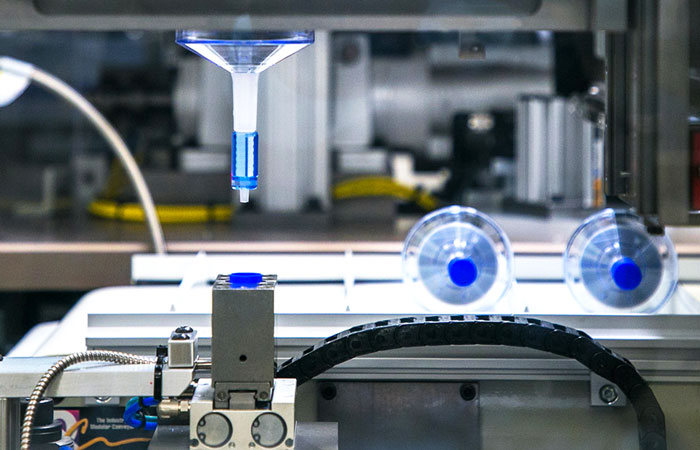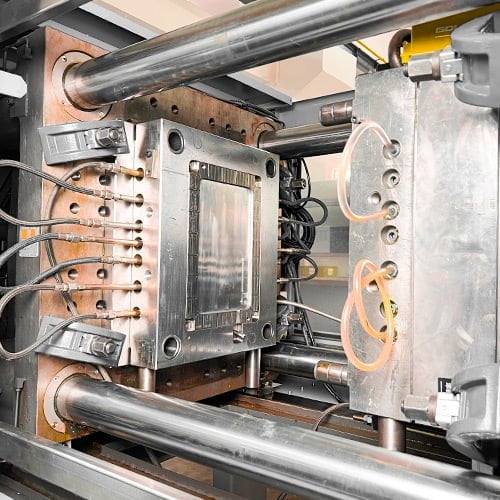Recognizing the Plastic Injection Molding Refine for High-Quality Production
Recognizing the Plastic Injection Molding Refine for High-Quality Production
Blog Article
Comprehending the Fundamentals of Plastic Shot Molding Processes
Plastic injection molding functions as a keystone of modern manufacturing, providing a methodical technique to producing complicated elements with accuracy. This process not only incorporates the essential steps of melting and injecting materials into mold and mildews yet also involves a nuanced understanding of various affecting aspects, such as temperature level and stress. As markets increasingly demand efficiency and quality, the intricacies of this method end up being a lot more essential. Discovering these vital components can reveal exactly how even minor modifications can result in significant improvements in manufacturing outcomes, questioning concerning the possibility for innovation in this recognized process.
What Is Plastic Injection Molding?
Plastic shot molding is an extensively made use of production process that changes thermosetting and polycarbonate products into precise and intricate shapes. This method is favored for its capability to generate high volumes of the same get rid of extraordinary precision, making it a vital method in different markets, consisting of automobile, customer goods, and medical tools.
The process includes thawing the selected plastic product and injecting it into a mold under high stress. The mold, made to the specs of the wanted part, allows the molten plastic to take shape as it cools and solidifies. As soon as the product has actually set, the mold is opened, and the ended up component is ejected.
Plastic injection molding uses several advantages, consisting of minimized waste, uniformity in manufacturing, and the capacity to incorporate detailed styles that may be challenging with other producing techniques. Furthermore, it supports a wide variety of products, each providing distinct properties that can be customized for certain applications. As sectors remain to innovate, plastic injection molding stays at the center, allowing the development of advanced items that meet progressing customer demands.
The Injection Molding Process
The shot molding procedure is an innovative strategy that entails several crucial stages to produce high-quality plastic parts. Plastic pellets are fed right into a warmed barrel where they are thawed right into a viscous liquid. This molten plastic is then infused under high pressure right into a precision-engineered mold, which forms the product into the preferred type.
When the mold is loaded, the plastic is allowed to solidify and cool, taking the shape of the mold and mildew dental caries. Air conditioning time is critical, as it influences the cycle time and the last properties of the shaped component. After sufficient air conditioning, the mold and mildew opens, and the completed element is ejected using ejector pins.

Materials Made Use Of in Injection Molding
Different products can be used in the shot molding process, each offering one-of-a-kind buildings that cater to specific applications. One of the most frequently utilized products include thermoplastics, thermosetting plastics, and elastomers.
Thermosetting plastics, like epoxy and phenolic materials, go through a chemical modification throughout the healing process, causing a rigid, inflexible framework. These materials are suitable for applications requiring high warmth resistance and Homepage architectural stability, frequently made use of in auto parts and electrical insulators.
Elastomers, consisting of silicone and rubber-based materials, supply adaptability and strength. Their unique residential properties make them ideal for applications that demand flexibility, such as gaskets and seals.
Furthermore, specialty materials like bio-based plastics and compounds are obtaining grip for their environmental advantages and enhanced performance attributes, widening the extent of injection molding applications in different industries. Understanding the residential properties of these materials is important for selecting the proper kind for particular tasks.
Advantages of Shot Molding
Injection molding sticks out as a very effective manufacturing process that offers numerous advantages for creating complex parts with precision. One of the most significant benefits is the capacity to develop detailed layouts that would certainly be impossible or tough to attain with other approaches (Plastic Injection Molding). The procedure enables comprehensive attributes and tight resistances, guaranteeing top quality elements
In addition, injection molding is understood for its fast production capacities, making it an excellent option for high-volume manufacturing. Once the mold and mildew is produced, parts can be produced quickly, lowering lead times and increasing overall efficiency. This efficiency not just reduces manufacturing prices however also supplies a competitive edge in the marketplace.
The adaptability of materials utilized in injection molding additionally enhances its charm. official statement A wide variety of thermoplastics and thermosetting polymers can be utilized, allowing makers to select products that finest meet their certain requirements, including versatility, toughness, and heat resistance.
Additionally, the process minimizes waste, as excess material can commonly be reused and reused. This sustainability look at this website aspect adds to a lowered ecological impact, making injection molding a liable manufacturing selection. On the whole, the advantages of injection molding make it a favored approach for lots of sectors.
Factors Affecting Product Top Quality
While numerous factors can influence item high quality in shot molding, recognizing these components is crucial for achieving ideal results. Secret elements consist of material selection, processing parameters, and mold and mildew design.
Material option plays a vital duty, as different polymers display special residential or commercial properties that affect flowability, strength, and thermal stability. Inadequate product selection can lead to flaws such as warping or insufficient filling.
Processing criteria, consisting of stress, temperature, and cycle time, have to be carefully managed. Variants in these setups can lead to disparities partially measurements and surface area coating. As an example, exceedingly high temperatures may create deterioration of the polymer, while inadequate stress can result in short shots.
Mold layout is similarly important, as it establishes the flow of the molten plastic and the cooling process. Inadequately created molds might bring about unequal cooling rates, resulting in recurring stress and anxieties and dimensional mistakes.

Verdict
In final thought, plastic shot molding acts as an essential production process that enables the efficient production of top quality components. Mastery of the injection molding procedure, consisting of the understanding of products and the impact of different elements on product top quality, is essential for achieving optimal outcomes. The benefits of this technique, such as cost-effectiveness and style flexibility, further emphasize its relevance throughout multiple sectors, strengthening its status as a favored selection for high-volume manufacturing.
Plastic injection molding offers as a cornerstone of modern production, supplying a methodical technique to producing complex parts with precision.Plastic shot molding offers several benefits, including lowered waste, uniformity in manufacturing, and the capacity to integrate elaborate layouts that might be testing with other making techniques (Plastic Injection Molding). As industries continue to introduce, plastic injection molding stays at the forefront, making it possible for the advancement of advanced items that meet progressing consumer needs
The injection molding procedure is an innovative strategy that involves numerous essential phases to produce top quality plastic parts.In conclusion, plastic shot molding offers as an essential manufacturing process that enables the reliable manufacturing of premium parts.
Report this page